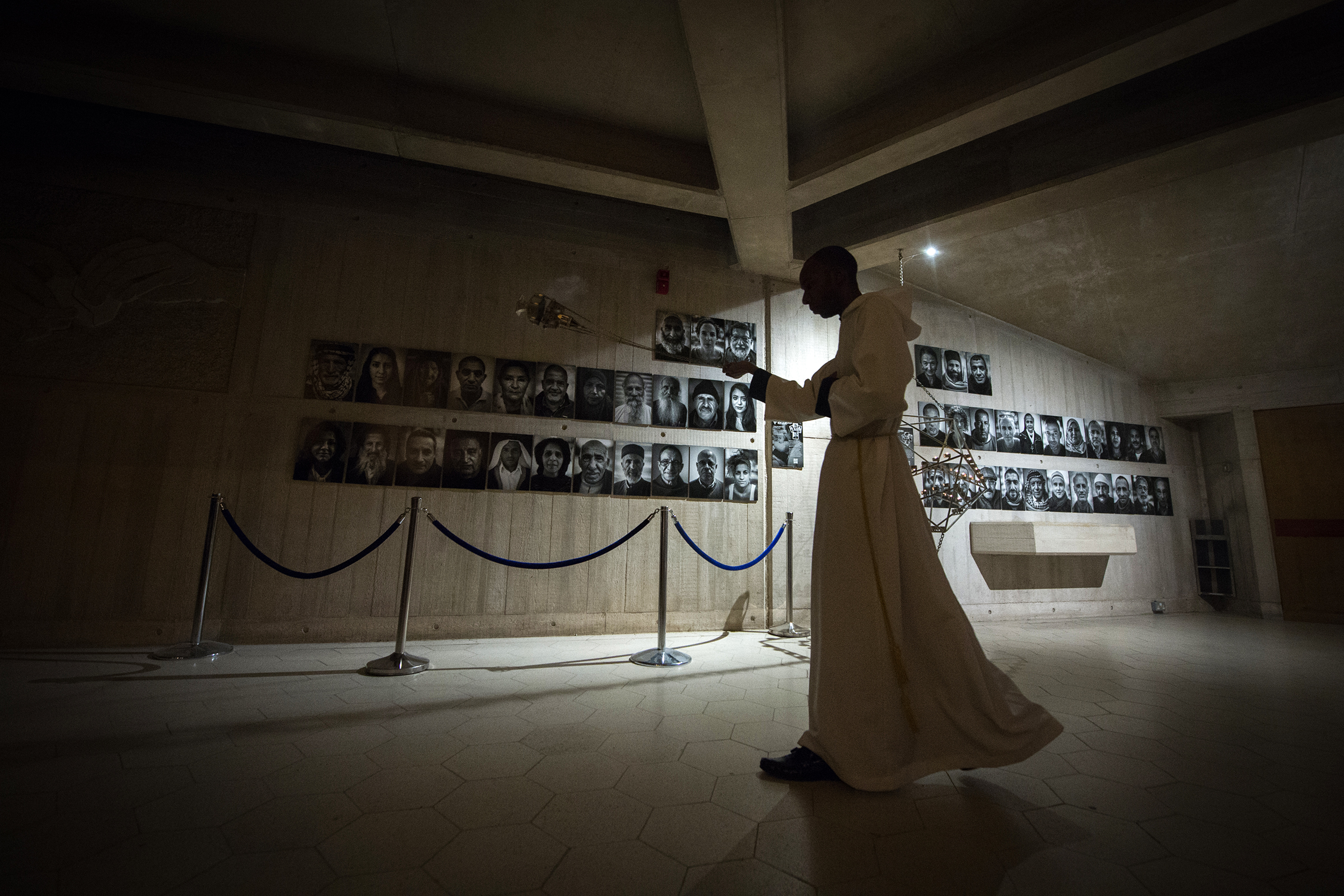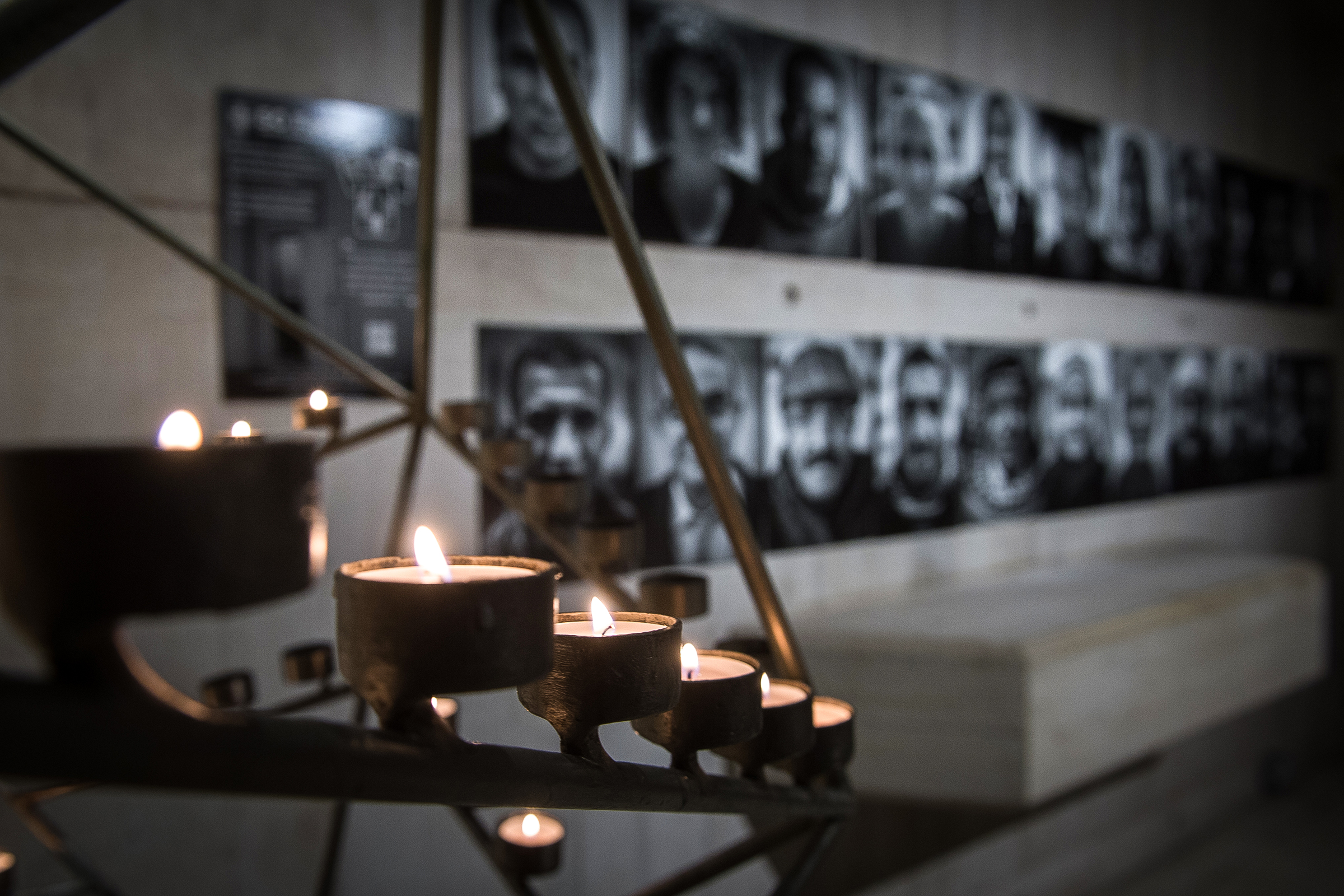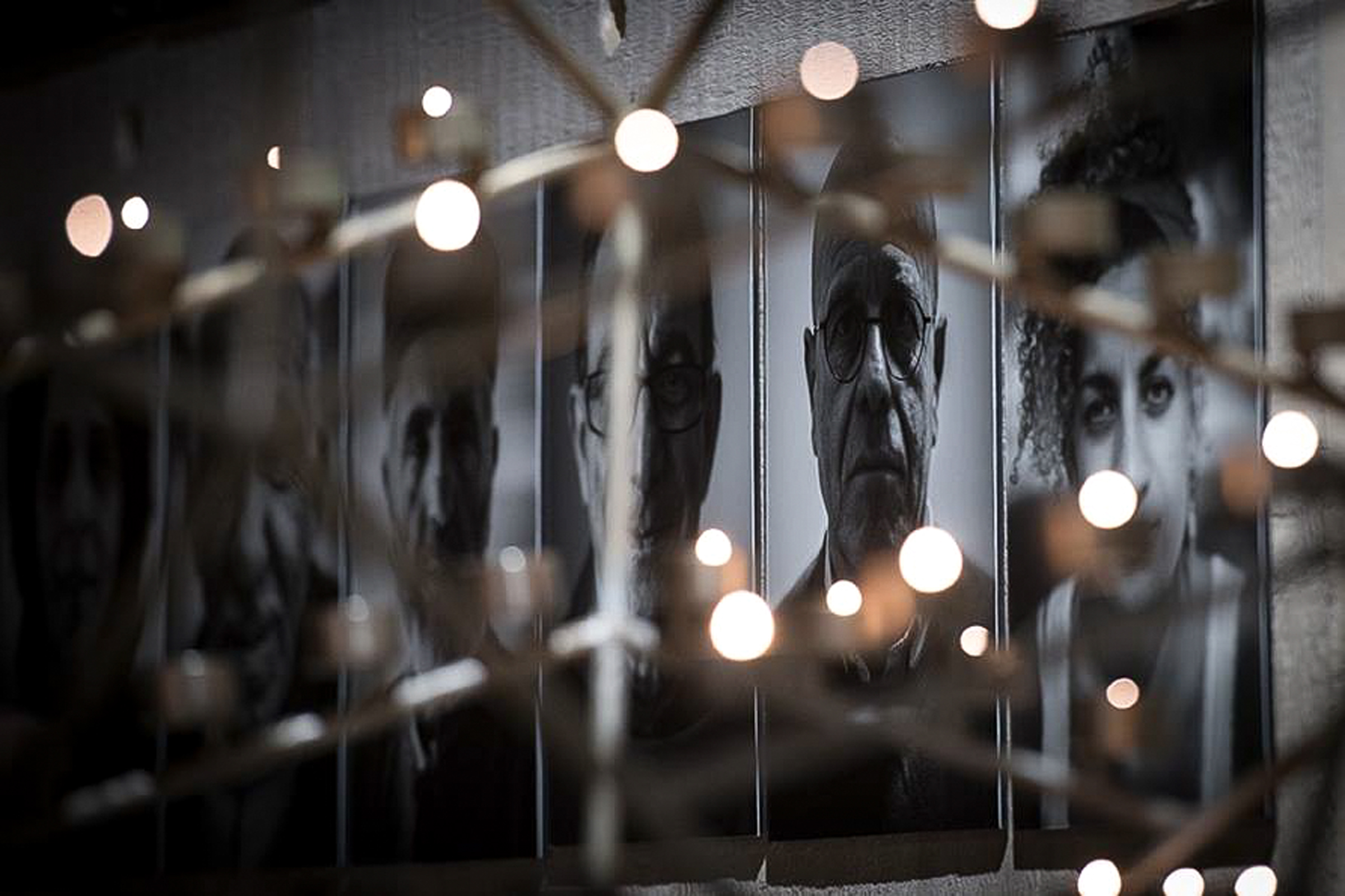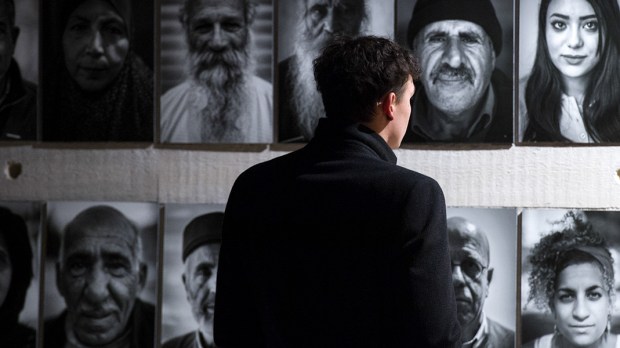Lenten Campaign 2025
This content is free of charge, as are all our articles.
Support us with a donation that is tax-deductible and enable us to continue to reach millions of readers.
Fifty years is not a long time in the Holy Land, whose history stretches across the millennia.
But for someone who has grown up in some of the region’s most challenging situations, 50 years can seem like a near-eternity.
Such is the case with Nazeeh, a 51-year-old Palestinian from a Palestinian village in the northeastern West Bank called Ramin.
“I was born on the first day of the occupation, in 1967, and since then we have been living in this hard situation,” Nazeeh told Catholic Bishops’ Conference of England and Wales photographer Marcin Mazur recently.
Nazeeh’s weathered face appears in an exhibit of Mazur’s work that has been traveling to parts of England and Wales. The exhibit, intended to promote peace in the Holy Land by emphasising the common humanity of both Israelis and Palestinians, appears in this year that marks the 50th anniversary of the Six-Day War.

Mazur, a native of Poland, has spent much time in the Holy Land, including areas such as Gaza or a refugee camp in Jordan, because he often accompanies bishops on their regular visits to the Holy Land. In 1998, the Vatican asked the English bishops to serve as coordinator for bishops from around the world who visited the Holy Land in support of the local Church. This Holy Land Coordination is an annual meeting of bishops from across Europe, North America and South Africa.
As with most of the 50 people featured in the exhibit, only Nazeeh’s first name is used. In the online version of the exhibit, a brief recorded interview with the subject is available. Nazeeh explains how he never saw his father after he moved to Germany to find work and died there. Nazeeh got married, and he and his wife have five children, who all did well in school and want to go to university. That requires Nazeeh to work several jobs.
“I work in the olive trees, I work in the almond trees, I work in the factories of Tel Aviv. I also worked as school teacher,” he says.
But because of the security wall between Israel and the West Bank, it can take 12 hours for Nazeeh to travel the short distance between his home and workplace, he said. So he must stay for long periods of time on the side where he works, which means he is separated from his family, and misses a lot of special celebrations, such as the Muslim feast of Eid.

“It’s the most amazing thing when you can see your house but you can’t talk to anybody for 30 days, 60 days, because if I want to go back home, I can’t come back to work,” Nazeeh said. “I need to stay in the job.”
“Sometimes my friends ask me ‘Why did your face get old so quickly?’ Why? I am working 17, 18, 19 … sometimes 21 hours a day under the sun and living in stress. … My skin is like the skin of the olive tree, and olive trees are holy for us. They are like part of the family—they suffer with us.”
As with the land he inhabits, Nazeeh shares space in the exhibit with Jews, Muslims, Catholics, Orthodox, Anglicans, Copts, Druze, Samaritans, Bedouins and others. Here there are former soldiers, people who lost children in the conflict, people from Gaza refugee camps, Israeli settlers, Holocaust survivors, a former member of the Knesset, and people from nearly every corner of Israel and Palestine, including the Golan Heights and the Negev Desert.
Mazur, who said he wanted to create a platform where people in the West can see people of the Holy Land “face to face,” insisted that his exhibit is not a political statement, but an attempt to show people as they are, without any political baggage.

“I hope people will be able to see in the photographs another person,” he said in an interview. “I was focusing on the face and eyes. I want to create eye-to-eye contact. I hope someone who comes to the exhibit will stop for a moment, stop and think, stop and realize that life is not so easy for some people who are not able to move, who are most of their lives (all their lives, in so many cases) living in refugee camps. Stop and think about the mother who lost her only son at the check point when he was on duty.”
He said the 50 photos and the accompanying stories were drawn from interviews with 100 people he met in his Holy Land travels over the course of 10 years. “To hear those people was an amazing experience,” he reflected.
Just the process of getting people to agree to be part of the project was a challenge. “Sometimes I was walking in places like Jericho and went for coffee and started to talk to local people, and then you get to know them and at the end some of them said yes to the project,” he recounted. At other times, even after interviewing people for a long time, some resisted being part of an exhibit, knowing they would appear side by side with people they considered their natural adversaries. “And you start again explaining why is so important to have people from all across the Holy Land in the same project,” Mazur said.
The photographer said it was important to offer another perspective, as most news reporting focuses on divisions and conflict. In the midsts of that conflict, it is important to remind people of the common humanity of all who live in the Holy Land, which is greater than political and social differences, he said.
The Holy Land Co-ordination will be meeting again in January, 2018, as it seeks to support the local Church and promote peace.

